
ESV Systematic Theology Study Bible
The ESV Systematic Theology Study Bible from Crossway focuses on doctrine with a focus on Reformed theology. It places articles of key doctrines throughout the text. It’s different from the standard study Bible format in that it doesn’t include verse-by-verse commentary, charts, or maps (in the text or in the back). I’m reviewing the hard cover edition – ISBN: 9781433553370, printed in USA.
_____________________________________________
This book is available at (includes some affiliate links)
_____________________________________________
Cover and Binding
This edition is hard cover with a dust jacket. The cover underneath matches the dust jacket except for the back cover which has color pattern but no text. The text-block is sewn and has no trouble staying open to any page. It does have some cockling (wrinkling in the inner margin) and the text bends into the gutter, but it isn’t that bad (just enough to mention). The overall size is 9 1/4 x 6 3/8 x 1 5/8″. It weighs 2 lbs, 10.5 oz.
Paper
This is the thinnest paper that I’ve seen from Crossway. I’d guess it to be in the upper 20’s in gsm. The pages crinkle easily. The first few pages were crinkled out of the box. It’s white in color and has a slightly rough texture which makes it easy to rub the pages together to separate them (my usually method). It isn’t as opaque as I’d like. It looks better under certain lighting. It doesn’t have any glare, so that helps with readability. It has 1884 pages.
I saw a little bit of page-curl at a time when none of my Bibles are getting page-curl. A few pages were creased slightly before the pages were cut. When I straighten them they hand out past the edge of the book block. I don’t recommend marking this paper.
Typography
The text is presented in double column paragraph format with poetry set to stanzas. Section headings are in bold italics. The header shows the book name, chapter, and verse number in the outer margin, and page numbers in the center – all in bold and all-caps. Cross references are placed under the last verse on the page. Footnotes are placed under both columns of text. Articles are placed below the text in a single column.
The font is around 9 point with a large leading and is black letter. It’s about a medium darkness and is sharp. For the most part it’s clean and easy to read, but readability is hampered a little by the show-through of the paper. The text is not printed with line-matching. There are a few pages that do line up, and those are much easier to read. Most lines don’t match up. This affects the articles more than the text. It’s more obvious in some lighting than others.
It has around 46 characters per line with 8-10 words per line. It has a lot more white space between words than most Bibles and is comfortable to read. Prose looks great but there are a lot of poetic lines with a single word, which I find to be slightly less readable. It helps that the text doesn’t have to share horizontal space with the references.
There are several family pages in the front including a presentation page, marriages, births/adoptions, and deaths.
References and Footnotes
References follow the standard Crossway design and are placed under the last verse on the page. This is a highly efficient design as it doesn’t intrude on the horizontal space for the text. They provide the verse number in bold and the reference keys in a much smaller font.
Here are a few examples to help you compare:
- Genesis 1:1 – Job 38:4-7; Ps 33:6; 136:5; Isa 42:5; 45:18; John 1:1-3; Acts 14:15; 17:24; Col 1:16, 17; Heb 1:10; 11:3; Rev 4:11
- Deuteronomy 6:4 – Cited Mark 12:29; Isa 42:8; Zech 14:9; John 17:3; 1 Cor 8:4, 6
- Isaiah 9:6 – Luke 2:11; John 3”16; ch 7:14; Matt 28:18; 1 Cor 15:25; ch 22:22; 28:29; 10:21; Deut 10:17; Neh 9:32; Jer 32:18; Ps 45:3; 72:17; ch 63:16; John 14:18; Ps 72:7; Eph 2:14; ch 11:6-9
- Matt 17:20 – John 11:40, ch 6:30; 21:21, 22; Mark 11:23; Luke 17:6; ch 13:3, ver 9; 1 Cor 13:2; Mark 9:23
- Mark 11:23 – Matt 17:20; Ps 46:2; 1 Cor 13:2; Rev 8:8; Rom 4:20; 14:23; James 1:6; ch 16:17; John 14:12
- Mark 12:29 – Luke 10:27; cited from Deut 6:4, 5; Rom 3:30; 1 Cor 8:4, 6; Gal 3:20; Eph 4:6; 1 Tim 1:17; 2:5; James 2:19; 4:12; Jude 25; Matt 19:17; 23:9
- John 1:1 – Gen 1:1; Col 1:17; 1 John 1:1; Rev 1:4, 8, 17; 3:14; 21:6; 22:13; Rev 19:13; Heb 4:12; 1 John 1:1, 2; ch 17:5; Phil 2:6
- Acts 2:38 – ch 3:19; 20:21; 26:18, 20; Luke 24:47, ch 22:16; 8:12; Mark 16:16; ch 10:48; 8:16; Mark 1:4; ch 10:45; 8:15, 20; 11:17; John 7:39
- 1 John 1:1 – John 1:1; ch 2:13, 14; Acts 4:20; John 19:35; ch 4:14; John 1:14; 2 Pet 1:16; Luke 24:39; John 20:27
Footnotes are placed under the text and are keyed to the text with numbers. Footnotes include textual variant, translation difficulties, alternate renderings, explanations of technical terms, explanations of difficult readings, meanings of names, etc. The footnotes are great for shedding light on the translation.
Book Introductions
Book introductions take a couple of pages and cover the author and date, audience, theology in the book, and an outline. They primarily provide an over-view of doctrine found in the book. Many of the articles provide a Scripture passage and a summary of the doctrine in that passage. They cover the central themes and what’s unique in that book.
These are excellent introductions to the books and the doctrines in them. Of course there has to be theological bias (no way around that for a Bible about systematic theology). The information is well-written and good for reference.
In-text Articles
Rather than verse-by-verse commentary there are over 400 doctrinal articles placed throughout the text that cover key beliefs. They are placed at the bottom portion of the page and are separated from the text with a line. The font is smaller and a different style to help differentiate them from Scripture. They proved the title, ranges of Scriptures for reference, the doctrinal point, a section called Theology for Life (an application to the reader’s life), and references for more information.
As expected, the articles only include one point of view. Sometimes they feel more like eisegesis than exegesis. This is mostly due to them being simplified to fit the small space. They’re covered in greater detail in the back.
Articles and Resources
There are 267 pages of helps in the back. It doesn’t include the typical maps or charts that many study Bibles have.
Articles
It has 28 articles that go into more detail on the theology found in the 400+ articles in the text.
Titles include:
- What is Doctrine and Why is it Important?
- How to do Theology: Worldview and Process
- A Brief History of Doctrine
- Theological Traditions Within Christendom
- The Origin and Authority of the Biblical Canon
- Doctrine in the Creed and Catechisms of the Church
- Apologetics
- Orthodoxy and Heresy
- Doctrine and Preaching
- Reading the Bible Theologically
- Revelation
- Scripture
- God
- Creation
- Providence
- Humanity
- Sin
- The Christian Life
- The Person of Christ
- The Work of Christ
- The Holy Spirit
- Ordinances and Sacraments
- Grace
- Election
- The Gospel
- Salvation
- The Church
- Eschatology
The articles take a couple of pages each and provide a summary of the doctrines in much more depth than the in-text articles. I especially found the articles on history and Scripture to be interesting. They cover a lot of the historical development of doctrine and provide definitions of various views throughout history.
Some of the articles cover the doctrines from a factual standpoint rather than dealing with various interpretations. For example, the article on Creation doesn’t mention days, the age of the Earth, science, etc., but instead focuses on the fact that God created and what that means to our worldview.
The articles do provide a Reformed view of theology but there are a lot of topics that many who are not Reformed would agree with and find valuable. I would like to see some articles on how to study the Bible and tools to do your own study. Since the articles are short and can only scratch the surface of any of the topics I’d also like to see a list of resources for further study. The articles are well-written.
Contributors include:
- Christopher W. Morgan
- Stephen J. Wellum
- Robert A. Peterson
- Graham A. Cole
- David F. Wells
- John M. Frame
- Robert Letham
- Gregg R. Allison
- R. Kent Hughes
- J. I. Packer
- Michael J. Kruger
- Scott R. Swain
- Kelly M. Kapic
- Gerald Brey
- Fred Sanders
- David S. Dockery
- Michael S. Horton
- Bryan Chapell
- Stephen J. Nichols
- Michael Reeves
- Sam Storms
- Bruce Riley Ashford
- Donald Macleod
- Paul R. House
- Robert W. Yarbrough
Table of Weights and Measures
This is a single page that shows the biblical unit, approximate American and metric equivalents, and biblical equivalent. It’s short but helpful.
Canonical Index of Sidebars
This provides the complete list of Scripture references that have an article and includes the name of the article for that passage. This lets you look up the articles by Scripture rather than the article’s title or topic.
Index of Sidebar Themes
This provides a list of all of the sidebar themes. It shows the topic in bold with the list of Scriptures in bold that it’s found with. It also shows related Scriptures and themes for further study.
Concordance
The concordance is 129 pages with two columns per page. It has a lot of references and is a good tool for study and sermon prep. Here are a few examples to help you compare:
- Christ – 17
- Christ’s – 3
- Christian – 2
- Christs – 1
- Faith – 36
- Faithful – 12
- Faithfulness – 7
- Faithless – 2
- God – 56
- Goddess – 2
- Godliness – 6
- Godly – 4
- Gods – 4
- Praise – 11
- Praised – 4
- Praises – 3
- Praising – 4
- Pray – 13
- Prayed – 5
- Prayer – 11
- Prayers – 7
- Praying – 4
Conclusion
Crossway’s ESV Systematic Theology Study Bible isn’t for everyone. This isn’t a Bible with pretty colors and pictures. Those who a looking for basic study helps such as charts and word studies will not be interested in this Bible. Its focus is on the Reformed theological view, so only showing one point of view is to be expected, but it does a good job of introducing that view. The paper isn’t as high-quality as I’m used to seeing from Crossway and I would like to see more resources that promote Bible study. Anyone interested in a study Bible with a focus on Reformed focus will appreciate this study Bible.
_______________________________________
Buy from
_______________________________________
Photography by hannah C brown
Crossway provided this Bible free for review. I was not required to give a positive review – only an honest review. My opinions are my own.
We want to hear from you. Do you have the ESV Systematic Theology Study Bible? Let us know what you think about it in the comments.

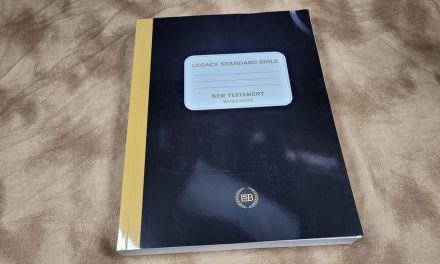
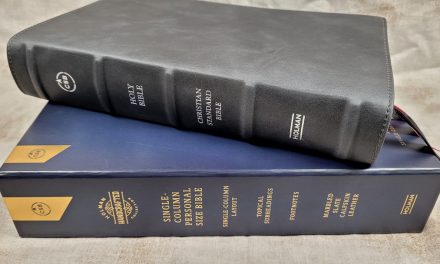
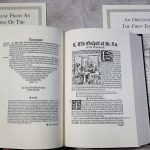
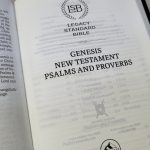



























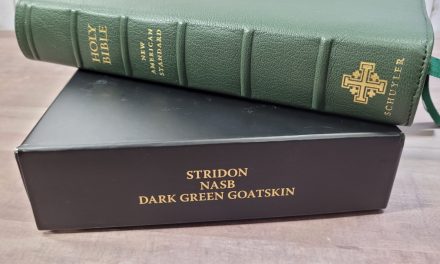


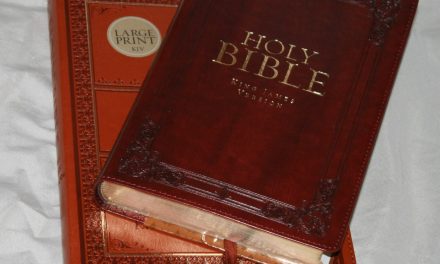



How would you compare this study bible to the Reformation Study Bible or Reformation Heritage KJV? Reformed scholars seem to be on fire the last several years. Love all the new content that is being published lately.
Hi Harry. That would be a great comparison. I need to get the Reformation Study Bible and then I’ll compare. I’ll try to look at the Reformation Heritage tonight for a quick comparison.
Many thanks for your review. My impression is that the ESV should be bought in a separate and suprperiorvtext, and that the essays, articles and notes should be separately published as the ESV Systematic Theology Handbook.
Surprisingly, Crossway did not reply to my suggestion of a separate Handbook! I read through the essays rpetc.,and rpthen gave away this Bible.
I think that is a very good idea indeed. Hope they eventually respond.
Does this bible dive into the covenant of works, grace and redemption?
I left it in my office at Church. I’ll grab it this Sunday and check.